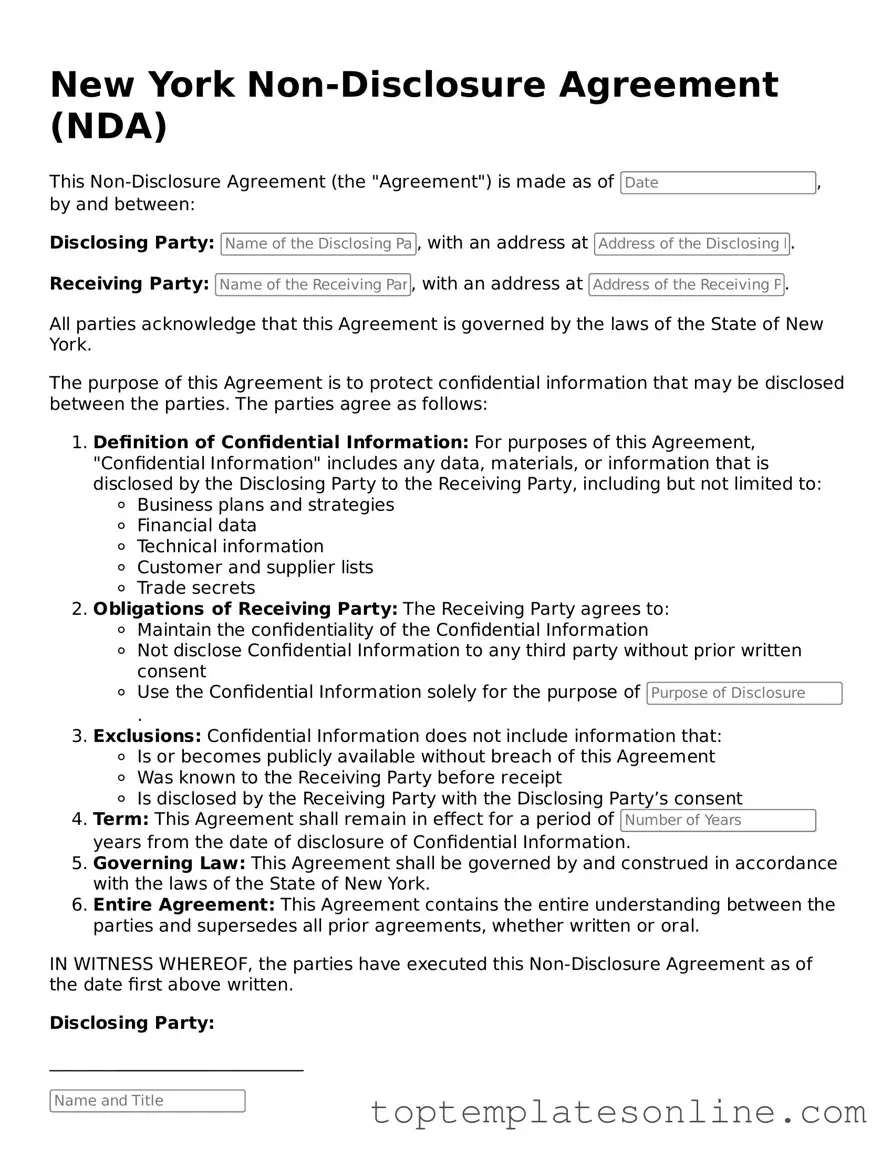Blank Non-disclosure Agreement Template for New York State
A New York Non-disclosure Agreement (NDA) is a legal contract designed to protect confidential information shared between parties. This form establishes a mutual understanding that sensitive data will not be disclosed to unauthorized individuals. By using an NDA, businesses and individuals can safeguard their proprietary information and maintain a competitive edge.
Customize Non-disclosure Agreement Here
